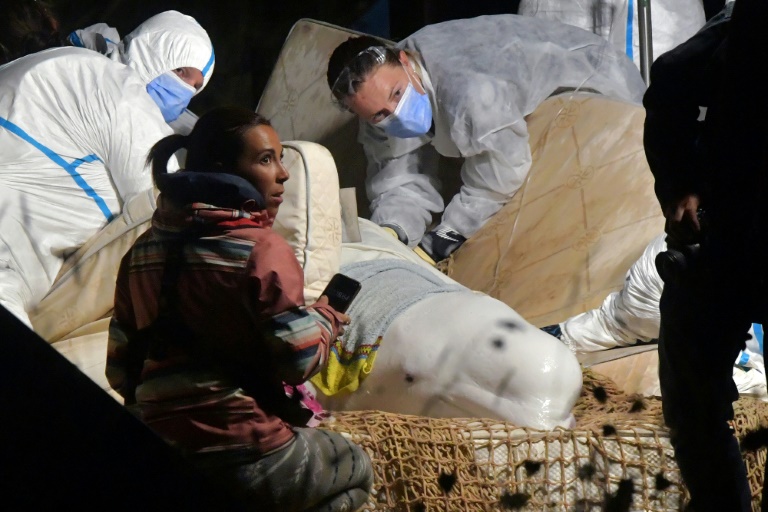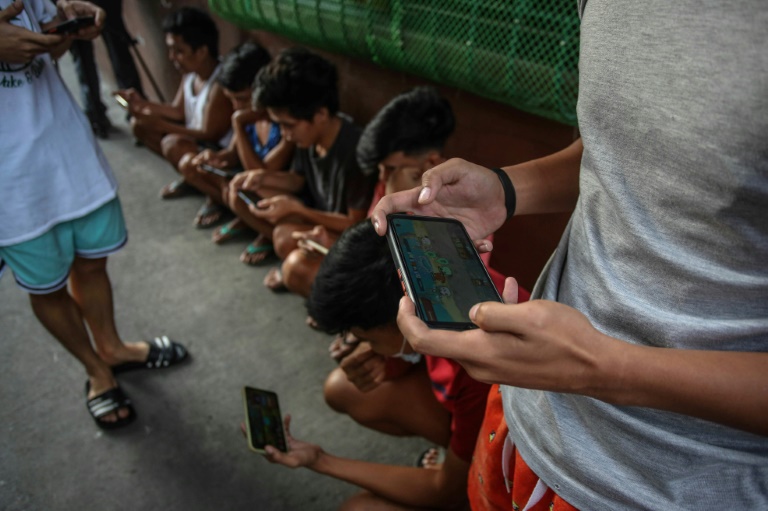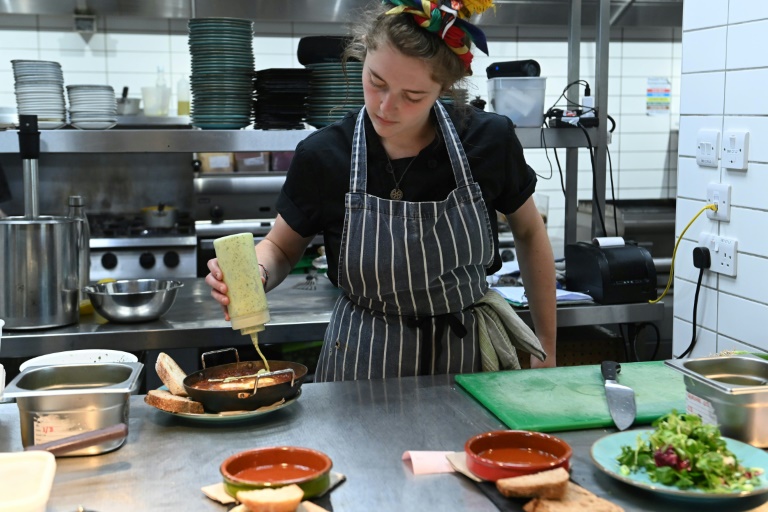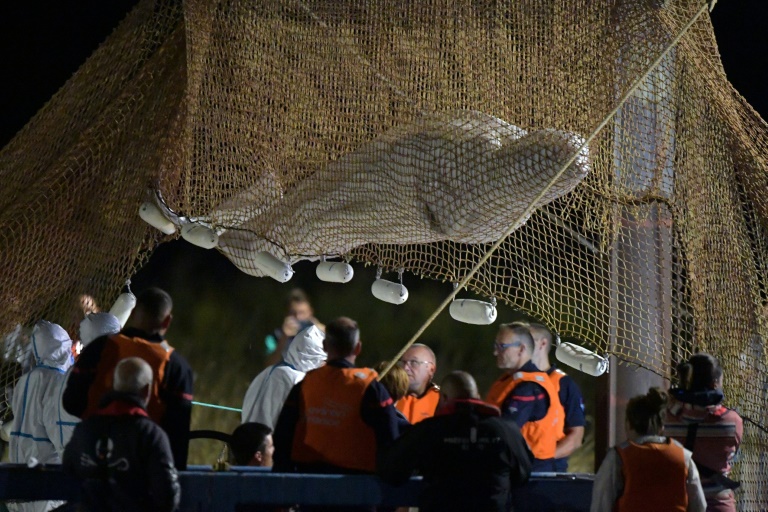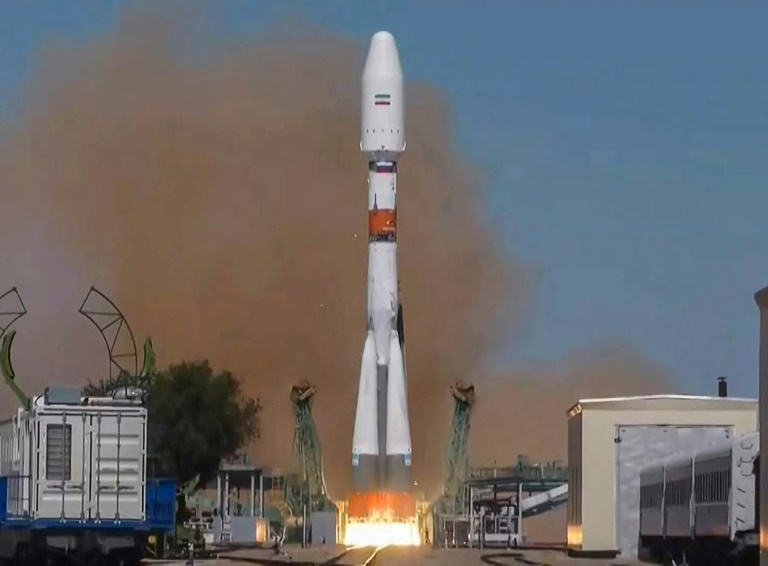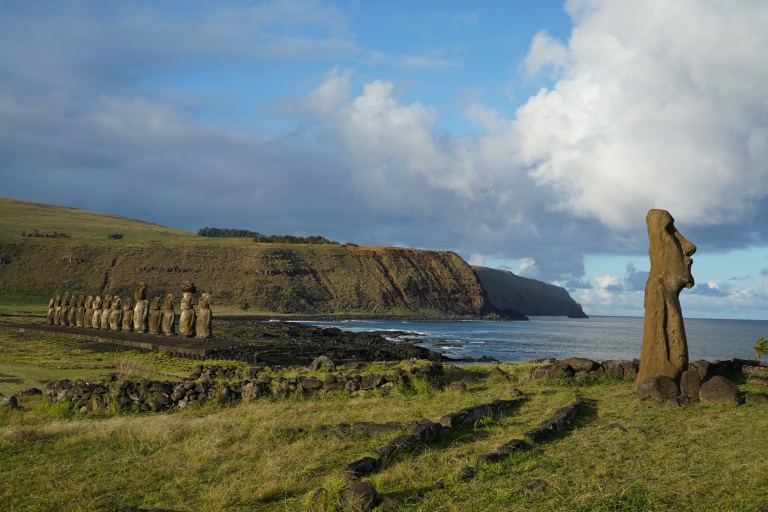Stranded beluga whale removed from France's Seine river
The whale was be transported by refrigerated truck to a seawater basin for observation
A beluga whale stranded in the Seine river in northern France for more than a week was removed from the water early Wednesday in a risky rescue operation, but officials warned it was in poor health.
After nearly six hours of work by dozens of divers and rescuers, the 800-kilogram (1,800-pound) cetacean was lifted from the river by a net and crane at around 4:00 am (0200 GMT) and placed on a barge under the immediate care of a dozen veterinarians.
The beluga, a protected species usually found in cold Arctic waters, was then given a health check and driven in a refrigerated truck toward the coastal town of Ouistreham.
Upon arrival, the beluga will be installed in a seawater lock where it will be held for observation for several days before being released into the open sea.
But officials in Eure, where the beluga was stranded, said the whale was worryingly thin.
“It bodes, according to veterinarians, for a poor vital prognosis,” the Eure prefecture said in a statement after the rescue operation, which it said was “particularly complex”.
The four-metre (13-foot) whale was spotted more than a week ago heading towards Paris and was stranded about 130 kilometres (81 miles) inland from the Channel at Saint-Pierre-la-Garenne in Normandy.
Since Friday, the animal’s movement inland had been blocked by a lock at Saint-Pierre-la-Garenne, 70 kilometres (44 miles) northwest of Paris, and its health deteriorated after it refused to eat.
Isabelle Dorliat-Pouzet, secretary general of the Eure prefecture, said earlier that medical tests would be carried out before transporting the whale.
“He is a male, that he is very underweight and that he has a few sores,” she said.
– ‘A great day’ –
The animal’s rescue was hailed online after a nail-biting few days.
“Today is a great day for this beluga whale and for everyone involved in its rescue,” conservation group Sea Shepherd said on its website.
But the operation to return it to the sea is not without risk, said Isabelle Brasseur of the Marineland sea animal park in southern France, part of a Marineland team sent to assist with the rescue.
“It could be that he dies now, during the handling, during the journey or at point B,” in Ouistreham, she told AFP Tuesday.
The 24 divers involved in the operation and the rescuers handling the ropes had to try several times between 10:00 pm and 4:00 am to lure the animal into the nets to be lifted out of the water.
As preparations for the operation got under way, people gathered along the banks of the river to observe.
“I’m hopeful that he will reach the sea and that he will not end up like the orca,” said Isabelle Rainsart, referring to a killer whale that was spotted in the Seine in May but later died.
“We will wait to see how the transport goes, but we may have already succeeded in the hard part,” added Rainsart, who first filmed the beluga on August 2 from her garden overlooking the river.
Interest in the beluga’s fate has spread far beyond France, generating a large influx of financial donations and other aid from conservation groups as well as individuals, officials said.
While belugas migrate south in the autumn to feed as ice forms in their native Arctic waters, they rarely venture so far.
According to France’s Pelagis Observatory, which specialises in sea mammals, the nearest beluga population is off the Svalbard archipelago, north of Norway, 3,000 kilometres from the Seine.
The trapped whale is only the second beluga ever sighted in France. The first was pulled out of the Loire estuary in a fisherman’s net in 1948.

